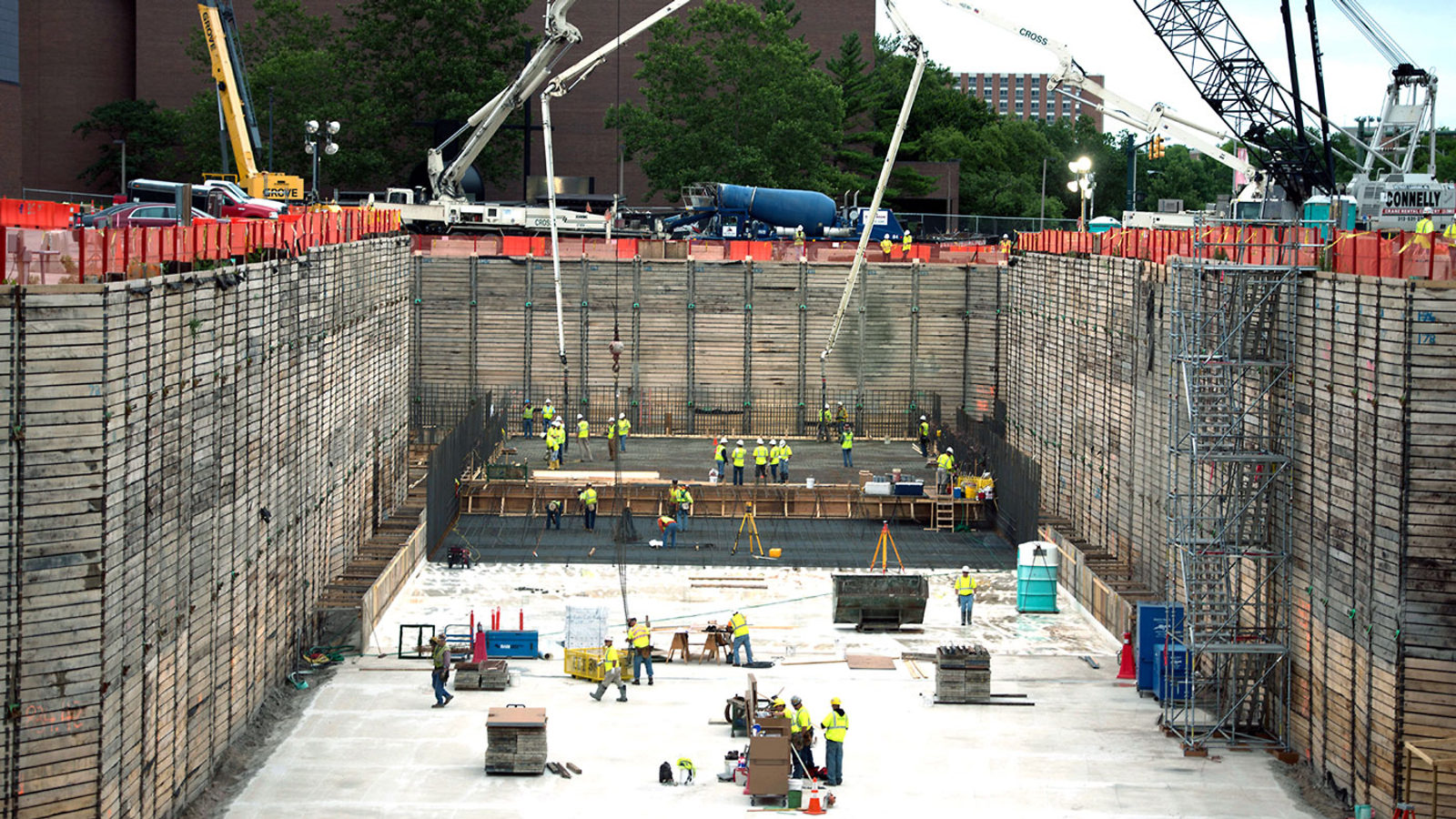Michigan State University’s campus will soon feature a powerful accelerator capable of producing particles rarely observed in nature.
The under-construction Facility for Rare Isotope Beams at MSU will eventually generate atomic nuclei to be used in nuclear, biomedical, material and soil sciences, among other fields of research. FRIB (pronounced ef-rib) could even help scientists investigate a mystery of particle physics.
FRIB will produce beams of rare isotopes, highly unstable atomic nuclei that decay within fractions of a second after forming.
Nature produces bounteous amounts of rare isotopes in supernovae through a series of nuclear processes that physicists have yet to fully understand. But supernovae explode many light years away. Therefore to study rare isotopes, scientists must produce them in the laboratory.
On July 23, construction trucks poured enough concrete to fill four Olympic-sized swimming pools into a massive rectangular hole in the ground at MSU. It was the first of four installments for the floor of the 1500-by-70-foot tunnel that will house FRIB’s linear accelerator.
FRIB, which is funded by the Department of Energy's Office of Science, Michigan State University and the State of Michigan, will support the mission of DOE's Office of Nuclear Physics and will be available for use by researchers from around the world. It is scheduled for completion in 2022.
FRIB will produce the highest-intensity beam of uranium ions of any rare isotope facility in the world. When scientists accelerate uranium ions to about half the speed of light and then smash them into a target such as a disc of graphite, they create a slew of particles—including some rare isotopes.
The more intense the beam, the heavier and larger variety of rare isotopes that scientists can produce, says FRIB Project Manager Thomas Glasmacher: “The more incoming beam of particles you have, the better.”
FRIB should be able to produce a variety of different rare isotopes, says Walter Henning, former director for the GSI Laboratory in Germany that performs similar research.
“With FRIB, and other major facilities, one hopes to get further out on the periodic table and be more complete,” he says.
Nearly two dozen facilities across the globe produce rare isotopes. Facilities such as the ATLAS accelerator facility at Argonne National Laboratory and the Radioactive Ion Beam Factory at the RIKEN Institute in Japan focus their efforts on creating rare isotopes for scientists to study the nuclear properties and behavior. Other facilities, such as the Heavy Ion Research Facility in Lanzhou, China, and TRIUMF Laboratory in Canada, offer research in additional applications such as cancer treatment. FRIB will offer researchers the chance to do a little bit of both and more.
“There are four pillars of the FRIB science program,” says MSU professor Bradley Sherrill, chief scientist of FRIB: Understanding the stability of atomic nuclei; discovering their origin and history in the universe; testing the fundamental laws of symmetries of nature; and identifying industrial applications of rare isotopes.
The properties and behaviors of rare isotopes and how they decay could hold clues to why matter is far more abundant than antimatter in the universe—a mystery that concerns particle physicists.
The big bang should have created equal amounts of matter and antimatter particles. If particles and antiparticles behave differently, that could be the cause of the imbalance that allows us to exist. The decay behavior of rare isotopes could divulge never-before-seen particles or interactions that would offer further insight to this mystery.



